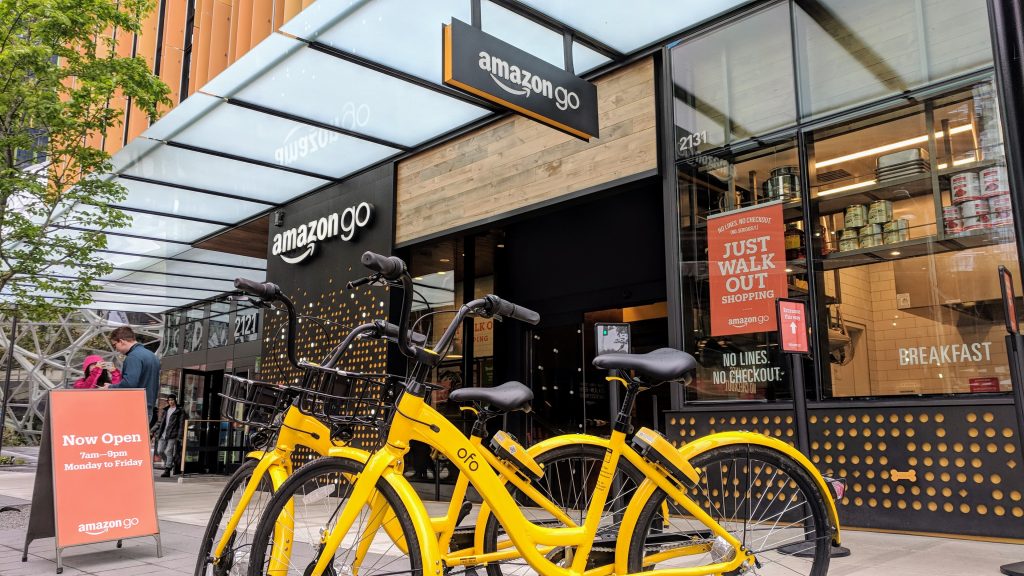Amazon’s Cashier-less Grocery Store Makes Its debut in Seattle

Amazon has eliminated the checkout line in its newest grocery store in Seattle. The new 10,400-square-foot Amazon Go Grocery store opened on Tuesday in the Capitol Hill neighborhood of the city.
The new store would allow shoppers to grab their groceries and walk out without lining up at the cashier register. The store will be equipped with cameras and sensor that will keep track of the items that are taken off the shelves.
Shoppers will scan a smartphone app as they enter, and the items they pick will be charged to an Amazon account when they leave.
While the store does not require any human interaction, a few staff members will still be around to stock shelves and assist shoppers. An employee will be standing by the alcohol section to check the identification of shoppers who want to buy alcoholic beverages.
According to Associated Press, Amazon Go Grocery does not have a deli counter, fishmonger or butcher. Shoppers will find the store’s supply of sliced ham, steaks and salmon fillets already packaged in refrigerated shelves. Produce will not require weighing as items are priced individually.
Shoppers cannot expect employees to bag their groceries either. They will receive reusable bags that they can fill with the items they want to take home.
Cameron Janes, vice president of Amazon’s physical retail division, said that the new grocery store is much like a “neighborhood market.”
“You’re seeing a lot of big strides in [this] store. Produce is a big example of that,” Janes told CNBC during a tour of the grocery.
“We’re just getting started here. I think what we’re trying to do here — and with all of our physical stores — is really work backwards from the customer, and deliver some differentiation.”
Most of the produce sold in Amazon Go Grocery comes from Whole Foods’ providers. Amazon spent $13.7 billion to buy Whole Foods Market in 2017.
Janes insisted that Amazon Go Grocery is not meant to replace Whole Foods. He said that the produce in Amazon Go Grocery complements the “natural and organic” that can be found in Whole Foods.
Janes explained that the biggest challenge to build the cashier-less store was making sure that the tech equipment could keep track of the produce being picked up by customers in the store. He declined to reveal how many similar stores Amazon intends to open.
Some lawmakers and activists have expressed concern that cashier-less stores may be discriminatory against low-income people who do not have credit cards.
Amazon’s convenience stores allow customers to pay cash. Amazon Go Grocery will also reportedly allow customers to speak to staff members so they can enter the store through the turnstile and pay cash before leaving.
The first Amazon Go store was initially opened in 2016, but it was made available to employees only as the company fine-tuned the store’s cashierless technology. It was finally opened to the public in January 2018 in the retail giant’s Seattle campus in January 2018.
Other convenience stores are also planning to eliminate the checkout counter. Earlier this month, 7-Eleven launched its 700-square-foot cashierless store in Irving, Texas. The store, located near its corporate headquarters, is still in the pilot test phase and is only available for employees.
Walmart’s wholesale division, Sam’s Club Now, is also testing a cashier-less technology at a store in Dallas, according to CNBC.